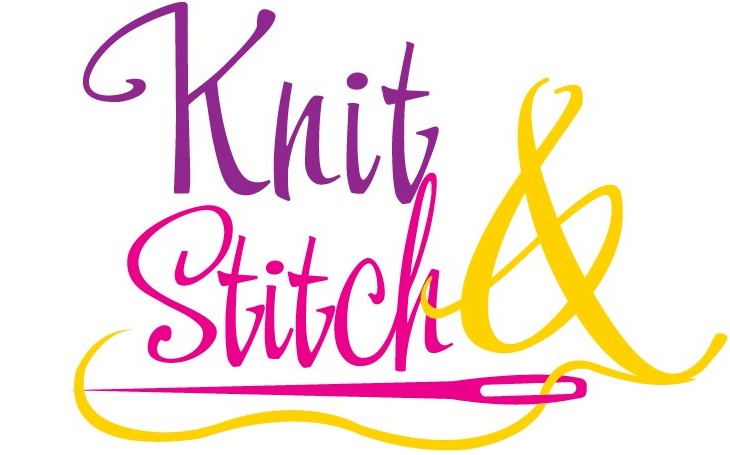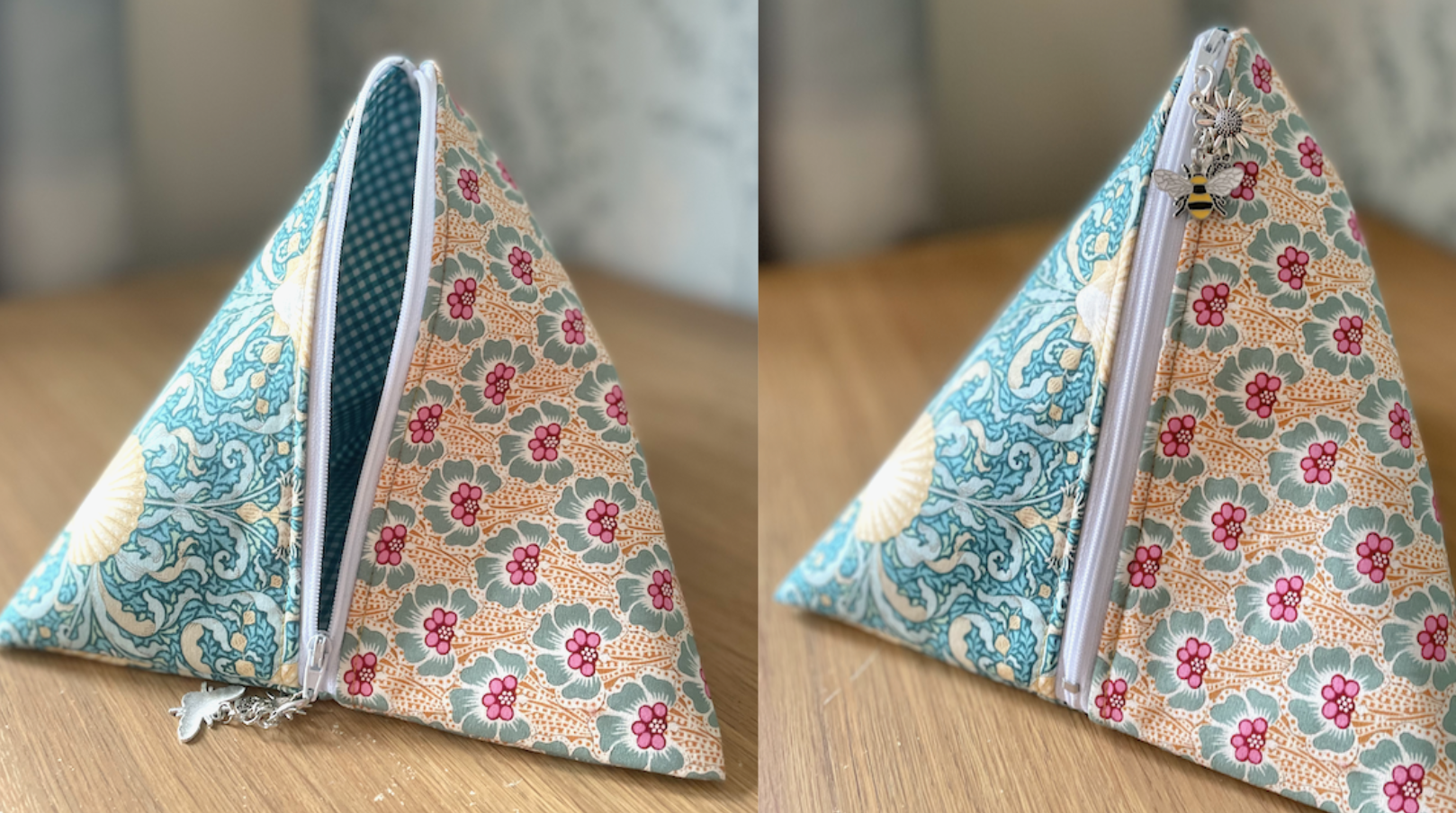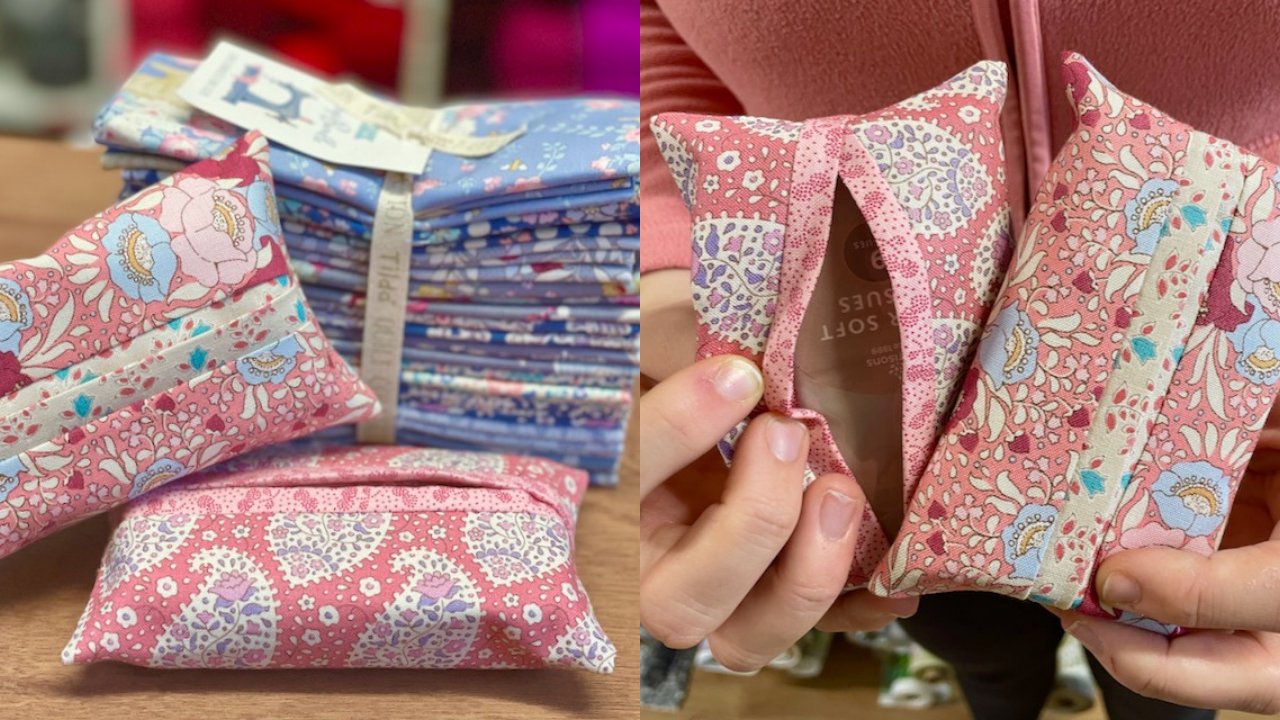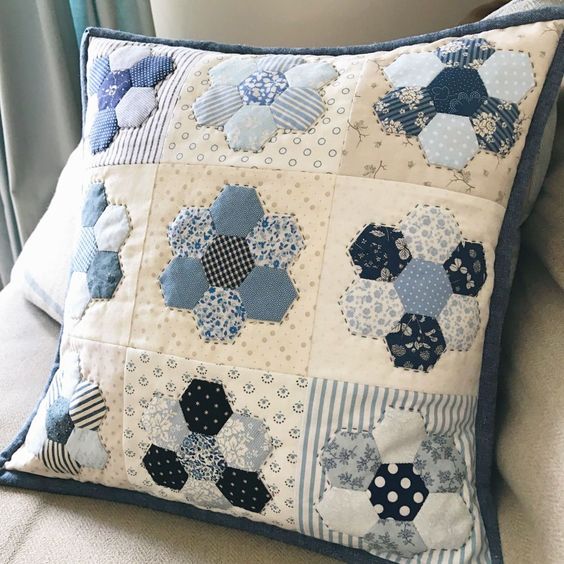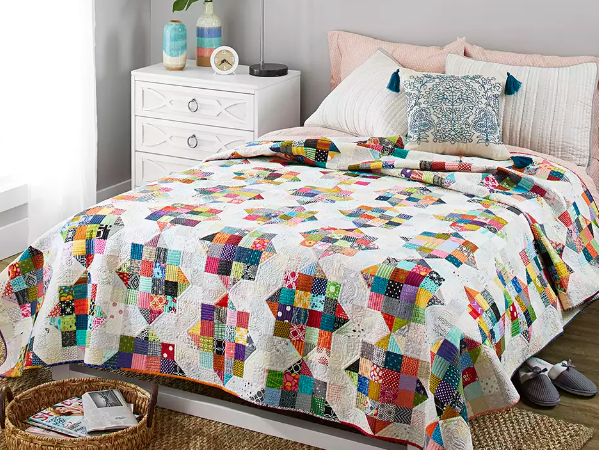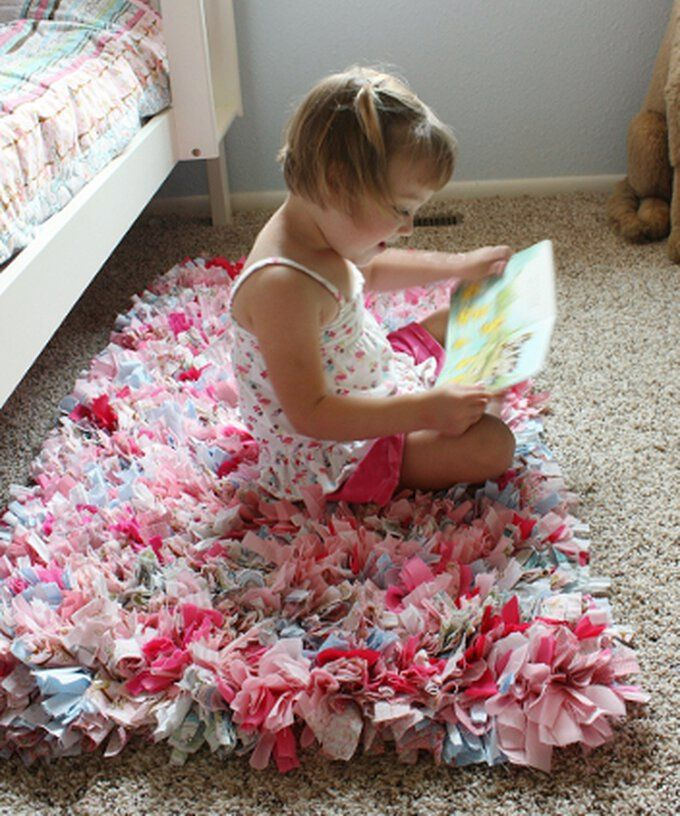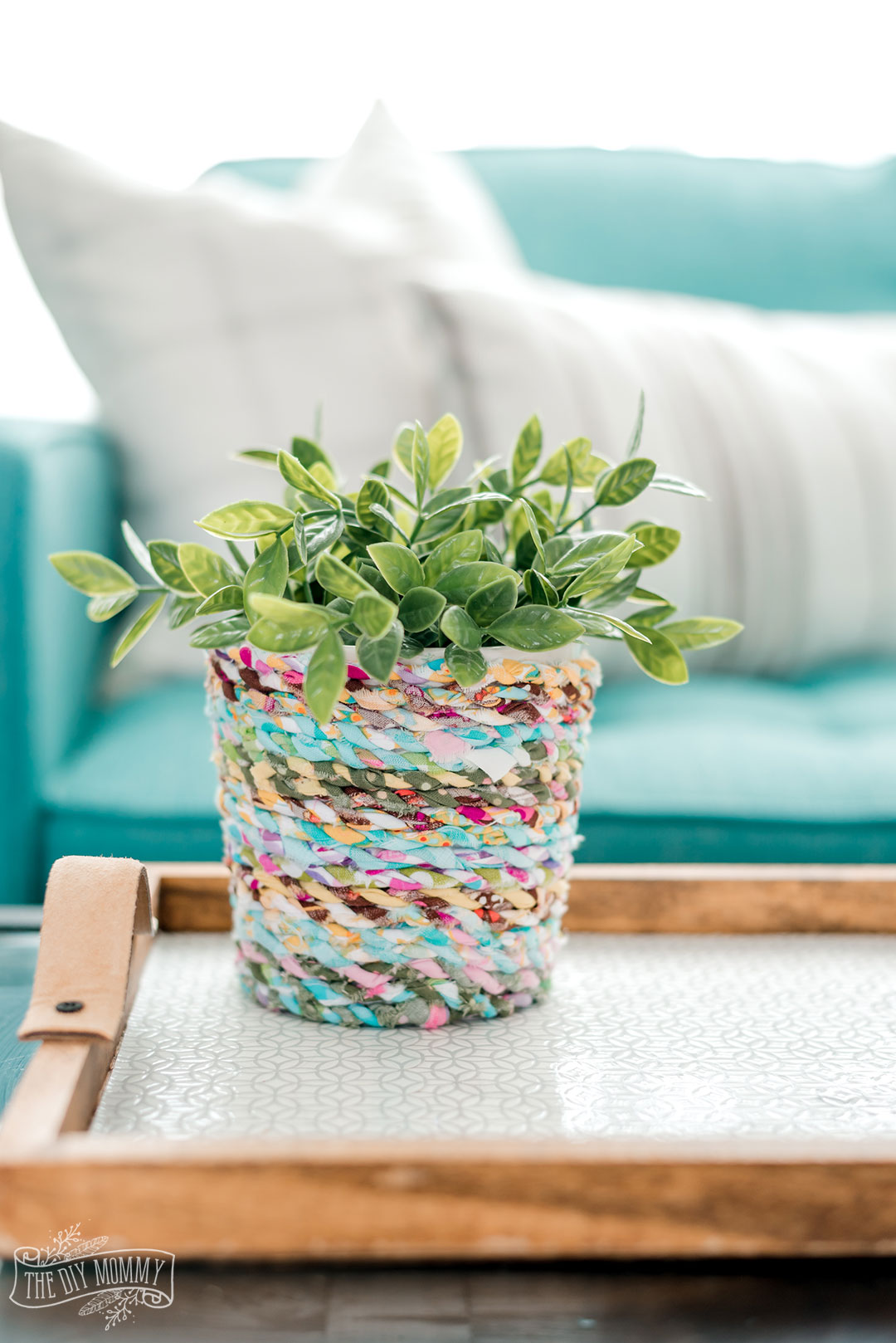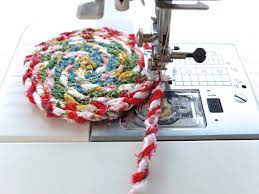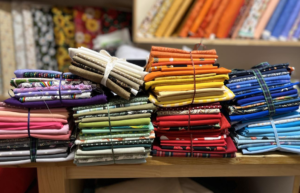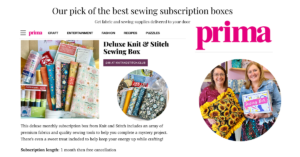DONNA’S FABRIC STASH BUSTER IDEAS
Do you feel overwhelmed with fabric scraps or fabric meterage but struggling to find a use for them?
Luckily there are lots of options for fabric crafts that can help you use up those extra bits of meterage!
1. Knit & Stitch Hub Tutorials Of course, our Knit & Stitch Hub is full of fantastic projects for your to try – many suitable for beginners that would make ideal gifts and you are free to sell these projects in an Etsy Shop, Market Stalls, Spring/Christmas Fairs or to Family & Friends. There is even a tutorial in there to help you set up an Etsy Shop and make a few extra pounds.
Many of the projects do not require large amount of fabric and can even be made from scraps and off cuts such as the Pyramid Pouch or the Tissue Holder.
2. English Paper Piecing
English Paper Piecing, EPP, is a traditional method of hand sewing small pieces of fabric together that hold their shape by being secured to paper pieces using either glue or thread.
The shape of paper is traditionally hexagon but there are diamonds, squares, jewels, circles all of which can be combined to make fabulous patterns.
Once the pieces have been joined (this is then referred to as a block), the papers are removed and the fabric you have created can be used to sew all sorts of projects from full sized quilts to pincushions – the projects are endless.
Please see the Knit & Stitch Hub for a tutorial on EPP.
3. Scrappy Quilts
The origins of scrappy quilts from a ‘make do and mend’ era made from left over fabric and even clothes.
There are many examples in textile museums that date back hundred of years.
Traditionally they were sewn by hand. Today scrappy quilts are still popular with people who just love fabrics and want to use as many in their quilts as possible.
There are two thoughts behind scrappy quilts – those that seem to be sewn with a random assortment of fabric as if the quilter has put their hand in a bin of fabric and pilled out pieces without looking – and those who chose a colour palette.
For a more impactful quilt make sure 25% of the medium/ darker prints are brighter than the other so you quilt doesn’t look dull.
If you have not got a good selection of fabrics you can also trade with a friend to get a broader selection.
Your quilt can look a bit uncoordinated until the entire quilt is finished – trust the process and stick with it – your quilt will be amazing.
These scrappy quilts are perfect for our charity of choice – the Linus Project.
It is the mission of Project Linus UK to provide love, a sense of security, warmth and comfort to children, who are sick, disabled, disadvantaged or distressed by donating gifts of new, homemade, washable quilts and blankets, lovingly made by UK volunteer knitters and quilters.
More information can be found on their website by following the link below: https://projectlinusuk.org.uk/
4. Rag Rugs
Traditionally, rag rugs were made using old clothing that had reached the end of its life… old woollen coats, trousers and thick fabrics.
The original rag rugs were made entirely using natural fibres as that’s all that existed at the time.
Cottons were saved for patchwork and finer crafts, but nothing went to waste.
Because of the materials that went into them, rag rugs tended to be made using dark colours – it’s what they had after all!
Nowadays, rag rugs can be made from cottons, fleece, jersey or a mixture of these. You can colour coordinate them to your room and make patterns, stripes, hearts, circles – the design possibility’s are endless.
With just a simple rag rug hook or prodder, hessian and scraps of fabric you can create a a wonderful cosy rug for any room in the house.
You can even make cushions and wall hangings using the rag rugging technique.
5. Fabric Scrap Braid
This is a fabulous craft to use up strips of fabric – strips when you are straightening up fabric edges, fabric selvedges and our wonderful Moda Scrap Bags
Cut scrap cotton fabric into 1″ strips by cutting a slit at the beginning and then rip the rest of the way.
Take two strips of fabric and knot them together Twist each strip individually, and then twist them together to form a strong, twisted rope. Continue until you create a long piece of twine
Keep adding lengths of fabric by overlapping a new strip onto the previous strip and keep twisting. This twine can then be glued or stitched to make plant pot holders, placemats and even rugs.
If you have a large crochet hook you can even crochet with it and make shopping bags etc. If you have a weaving loom this can also be used to add texture to a blanket or wallhanging.
Sewing twisted fabric twine with a zigzag stitch on a sewing machine.
